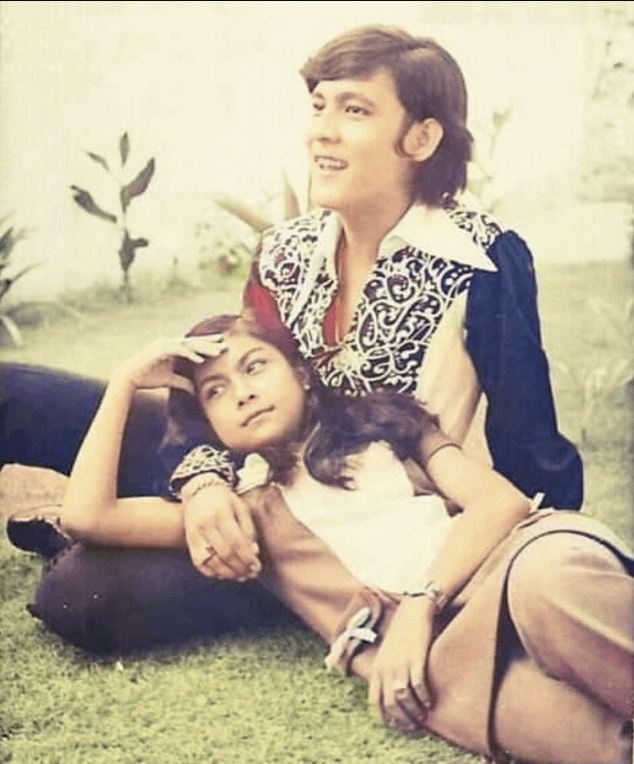Filipino love teams have defined generations of Philippine cinema and television, creating cultural touchstones that transcend mere entertainment. These iconic pairings have shaped box office trends, influenced media consumption patterns, and embodied the nation’s collective romantic ideals across decades.
From the pioneering silent film couples of the 1920s to today’s multimedia powerhouses, love teams reflect the evolution of Philippine media while maintaining their unique cultural significance. Let’s examine the classic pairings that didn’t just capture hearts—they created lasting legacies that continue to influence how Filipinos perceive romance on and off screen.
KathNiel: Redefining Longevity

Era of Dominance: 2011-2023
Kathryn Bernardo and Daniel Padilla transformed from teen sensations to legitimate dramatic powerhouses during their unprecedented 12-year partnership, setting new standards for love team evolution and commercial impact.
Industry milestones:
- “The Hows of Us” (2018) became the highest-grossing Filipino romance film of all time with ₱800 million
- Their television series consistently dominated primetime ratings across multiple genres
- Their transition from teen fare to mature storytelling brought critical respect to the love team format
What distinguished KathNiel was their ability to grow with their audience. Beginning with teen-oriented projects like “Growing Up” (2011-2012), they successfully navigated the challenging transition to adult roles while maintaining their core audience. This evolution kept their partnership relevant across significantly longer timeframes than typical love teams.
Even after their 2023 breakup, KathNiel remains a cultural reference point for an entire generation, demonstrating how effective love teams become embedded in national consciousness beyond their active years.
DongYan: The Fairy Tale Come True

Era of Dominance: 2007-Present
Dingdong Dantes and Marian Rivera exemplify how on-screen chemistry can evolve into authentic partnership, creating a narrative arc that audiences have followed from fictional romance to real-life family.
Defining characteristics:
- Breakthrough collaborations on “Marimar” (2007) and “Dyesebel” (2008) established them as primetime royalty
- Their 2014 wedding attracted unprecedented media coverage and public investment
- Their 2023 MMFF hit “Rewind” proved their enduring commercial viability as a married couple
DongYan’s unique contribution to Filipino love team history is their successful transition from scripted romance to authentic partnership without losing commercial appeal. Their family life—including their children Zia and Sixto—has become an extension of their professional narrative, allowing audiences unprecedented access to a love story that evolved from fictional to real.
Their ability to maintain box office credibility while being openly committed to family life has created a new model for love team longevity that balances privacy with strategic public engagement.
The Foundation: Guy and Pip

Era of Dominance: 1970s
Nora Aunor and Tirso Cruz III—affectionately known as “Guy and Pip”—established the modern template for Filipino love team success. Their partnership revolutionized Philippine entertainment at a pivotal cultural moment.
Box office impact:
- Their 1971 film “Guy and Pip” broke records with an astonishing six-month theatrical run
- Their signature “puppy love” dynamic resonated across socioeconomic boundaries
- Their television appearances consistently dominated ratings across networks
What made Guy and Pip exceptional was their authenticity. Their chemistry transcended their films, creating a cultural phenomenon that dominated fan magazines, radio programs, and live performances. Their impact was so significant that they essentially created the blueprint that future love teams would follow for decades.
ShaGab: Romance Beyond the Screen

Era of Dominance: 1980s
Sharon Cuneta and Gabby Concepcion exemplified how real-life relationships could amplify on-screen chemistry, creating a multimedia empire that dominated Philippine entertainment throughout the 1980s.
Career-defining projects:
- “Dear Heart” (1981) launched their partnership with undeniable box office success
- Their marriage in 1984 blurred the lines between performance and reality
- Their songs became staples at weddings and anniversaries nationwide
ShaGab’s appeal stemmed from their complementary personas—Cuneta’s “girl-next-door” warmth paired with Concepcion’s matinee idol charisma created a balanced dynamic that resonated across demographic divides. Their real-life relationship gave audiences unprecedented investment in both their professional projects and personal milestones.
The team’s impact extended beyond entertainment into cultural identity, with their films like “P.S. I Love You” establishing narrative tropes and visual aesthetics that would influence Philippine media for generations.
Rico Yan & Claudine Barretto: Immortalized by Tragedy

Era of Dominance: Late 1990s-2002
The partnership between Rico Yan and Claudine Barretto created a legacy that transcends their filmography, demonstrating how external circumstances can transform entertainment partnerships into cultural touchstones.
Definitive works:
- “Dahil Mahal na Mahal Kita” (1998) established their signature emotional depth
- “Got 2 Believe” (2002) became poignantly significant as Yan’s final film
- Yan’s sudden death in 2002 transformed their partnership into a symbol of unfulfilled potential
What distinguishes this love team is how tragedy reshaped their cultural significance. Yan’s untimely death at age 27 immortalized their partnership in the collective imagination, creating a “what might have been” narrative that continues to resonate with Filipino audiences decades later.
Their story demonstrates how love teams exist beyond their commercial products—they become repositories for audience emotions and cultural memory, particularly when real-life events interrupt fictional narratives in unexpected ways.
John Lloyd Cruz & Bea Alonzo: Millennial Heartbreak Specialists

Era of Dominance: 2000s
John Lloyd Cruz and Bea Alonzo redefined the love team format by embracing complex emotional narratives that resonated deeply with millennial audiences navigating changing social expectations around relationships.
Transformative projects:
- “One More Chance” (2007) created a cultural phenomenon with dialogues that entered everyday Filipino language
- Their characters Popoy and Basha became shorthand for relationship dynamics in popular culture
- Their willingness to portray flawed, realistic relationships elevated the artistic credibility of romantic films
This team’s unique contribution was their embrace of relatable imperfection. Moving beyond the idealized romances of previous eras, Cruz and Alonzo portrayed relationships with realistic complications, communication failures, and personal growth challenges that reflected the actual experiences of their audience.
Their impact can be measured not just in box office figures but in how their films created a shared emotional vocabulary for an entire generation of Filipinos discussing relationships.
The Cultural and Economic Impact of Love Teams
Beyond individual partnerships, Filipino love teams have significantly shaped entertainment economics and cultural transmission:
Box office dominance:
- Love team vehicles consistently outperform other genres in Philippine cinema
- KathNiel’s “The Hows of Us” (₱800 million) and DongYan’s “Rewind” (₱815 million) demonstrate their enduring commercial power
- Multimedia expansion allows love teams to leverage their appeal across platforms, maximizing revenue potential
Marketing ecosystems:
- Teams like AlDub (Alden Richards & Maine Mendoza) pioneered social media integration through the #Kalyeserye phenomenon
- Merchandising and endorsement portfolios often exceed film revenue, with teams becoming brand ambassadors across product categories
- Strategic media integration creates year-round engagement even between major projects
Societal influence:
- Love teams historically provided aspirational narratives during challenging socio-political periods
- Their portrayals of romance, often transcending class boundaries, created shared ideals across demographic divides
- The evolution of love team dynamics reflects shifting social attitudes toward relationships and gender roles
Challenges and Evolution
Despite their cultural significance, love teams face substantial challenges in the contemporary media landscape:
Artistic constraints:
- Actors like Liza Soberano have vocally criticized how love teams can restrict individual growth and expression
- The commercial imperative to maintain established pairings often limits creative exploration
- Contract obligations may force continued collaboration despite personal tensions
Fan dynamics:
- Intense fan investment can create problematic boundaries between performers’ professional and personal lives
- Resistance to new pairings creates obstacles for career development, as seen in fan backlash to Kathryn Bernardo’s work with Alden Richards
- Social media amplifies both support and criticism, creating unprecedented pressure on performers
Industry shifts:
- Shorter attention spans and increased content options have reduced the typical lifespan of new love teams
- Competition from K-dramas and international content has diversified audience expectations
- Growing preference for authenticity has increased interest in real-life couples over manufactured pairings
The Enduring Appeal
Despite these challenges, classic Filipino love teams retain their cultural significance through their ability to:
- Create shared generational experiences that become reference points for collective memory
- Provide aspirational narratives that balance fantasy with relatable emotional experiences
- Evolve alongside their audiences, reflecting changing social attitudes while maintaining core appeal
- Transform from entertainment products into cultural institutions with significance beyond their commercial value
The most successful love teams—from Guy and Pip to KathNiel—achieve this by balancing commercial appeal with authentic connection, creating partnerships that audiences invest in emotionally rather than simply consume passively.
Frequently Asked Questions
What made Guy and Pip revolutionary in Filipino entertainment history?
Their 1971 film “Guy and Pip” broke industry records with a six-month theatrical run, establishing the modern template for love team success. They were among the first to extend their partnership across multiple media platforms, including film, television, music, and live performances, creating an integrated entertainment experience that subsequent teams would emulate.
Why do Filipino love teams tend to have longer careers than Hollywood on-screen couples?
Filipino love teams benefit from integrated media systems where partners appear across films, television series, variety shows, and advertising campaigns simultaneously. This creates consistent audience engagement rather than the project-by-project approach common in Hollywood. Additionally, Philippine entertainment places greater emphasis on team continuity to build loyal fan bases that support projects regardless of content quality.
How have social media and digital platforms changed love team dynamics?
Digital platforms have dramatically increased fan participation in love team narratives, creating both opportunities and pressures. Teams like AlDub pioneered integration with social media trends, while platforms like Twitter give fans unprecedented access to express opinions about pairings. This creates more direct relationships between teams and audiences but also intensifies scrutiny of both professional and personal choices.
What factors determine whether a love team will achieve classic status?
Longevity is essential but insufficient alone. Classic status typically requires: 1) Projects that become cultural touchstones beyond entertainment, 2) Chemistry that audiences perceive as authentic rather than manufactured, 3) Successful navigation of career transitions as both performers and audiences mature, and 4) Narrative arcs—either fictional or biographical—that resonate with national identity and values.
These classic Filipino love teams haven’t merely entertained audiences—they’ve created shared cultural narratives that span generations, demonstrating the unique power of this distinctly Filipino entertainment tradition. From the pioneering work of Guy and Pip to the contemporary resonance of KathNiel, these partnerships have transcended their commercial origins to become integral elements of Philippine cultural identity.
With Media Meter’s real-time brand mention tracking, you’ll always stay ahead by knowing exactly where and how your brand appears in the media. Contact us for inquiries or view our sample media reports to know how we can help you.





